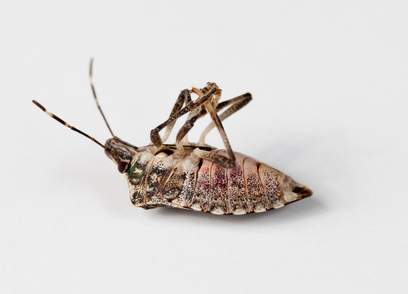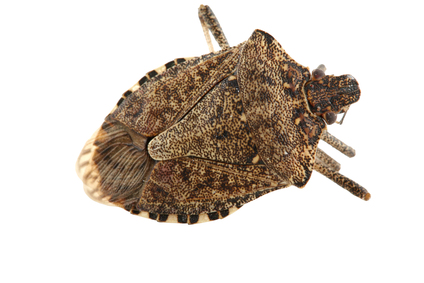 Okay class, welcome to Stink Bugs 101, where you will learn everything you have never wanted to know about stink bugs, and you probably wouldn’t want to. Nevertheless, for those who are obsessed with these reptilian insects, stay tuned and read on ahead, as we get you well acquainted with them. Whether you are an avid entomologist (a person who studies entomology – which is the study of insects), a frustrated homeowner looking for information on how to stop their invasion into your home, a farmer seeking to protect your crops against a stink bug infestation, or an insomniac who just can’t seem to sleep because you are too scared to sleep in the same room as those stink bugs crawling on your windows, there is plenty of information on this website to help you become familiar with them and how to deal with them.
Okay class, welcome to Stink Bugs 101, where you will learn everything you have never wanted to know about stink bugs, and you probably wouldn’t want to. Nevertheless, for those who are obsessed with these reptilian insects, stay tuned and read on ahead, as we get you well acquainted with them. Whether you are an avid entomologist (a person who studies entomology – which is the study of insects), a frustrated homeowner looking for information on how to stop their invasion into your home, a farmer seeking to protect your crops against a stink bug infestation, or an insomniac who just can’t seem to sleep because you are too scared to sleep in the same room as those stink bugs crawling on your windows, there is plenty of information on this website to help you become familiar with them and how to deal with them.
Species Information
 First and foremost, for all you science buffs reading this article, stink bugs are officially known as the species halyomorpha halys, and they belong to the insect family known as Pentatomidae. You might hear the phrase “stink bugs” are typically prefaced with “brown marmorated”. There are a number of different types of stink bugs that most notably differ in terms of color. Some stink bugs are green and some are brown, and some may even be found in a variety of other colors as well. “Brown marmorated stink bugs” are the most common and most well-known type of stink bugs found in North America. According to common every parlance, when you just drop the “brown marmorated” prefix, and just call them plain old “stink bugs”, you are typically referring to stink bugs of the brown marmorated variety. Marmorated, according to the dictionary, is an adjective that means “having a marbled or streaked appearance.”
First and foremost, for all you science buffs reading this article, stink bugs are officially known as the species halyomorpha halys, and they belong to the insect family known as Pentatomidae. You might hear the phrase “stink bugs” are typically prefaced with “brown marmorated”. There are a number of different types of stink bugs that most notably differ in terms of color. Some stink bugs are green and some are brown, and some may even be found in a variety of other colors as well. “Brown marmorated stink bugs” are the most common and most well-known type of stink bugs found in North America. According to common every parlance, when you just drop the “brown marmorated” prefix, and just call them plain old “stink bugs”, you are typically referring to stink bugs of the brown marmorated variety. Marmorated, according to the dictionary, is an adjective that means “having a marbled or streaked appearance.”
History of Stink Bugs
 Stink bugs are extremely fascinating insects, and are mysterious creatures, at that. In fact, the history of their origin in North America still remains shrouded in mystery to this day. You see, stink bugs are not native to the western hemisphere at all. Stink bugs are native to Asian subcontinental regions such as Japan, China, and the Koreas. Their natural habitats lie predominantly in these countries. And it had remained that way for however many thousands or millions of years that stink bugs had been roaming the earth. But everything changed just a couple of decades ago. While nobody knows exactly how or when it happened, all signs point to the theory that a cluster of stink bugs accidentally slipped through customs inspections unnoticed, either at the port of departure or at the port of entry in the United States. The earliest known report of stink bugs in the United States was in the year 1998, in Allentown, Pennsylvania.
Stink bugs are extremely fascinating insects, and are mysterious creatures, at that. In fact, the history of their origin in North America still remains shrouded in mystery to this day. You see, stink bugs are not native to the western hemisphere at all. Stink bugs are native to Asian subcontinental regions such as Japan, China, and the Koreas. Their natural habitats lie predominantly in these countries. And it had remained that way for however many thousands or millions of years that stink bugs had been roaming the earth. But everything changed just a couple of decades ago. While nobody knows exactly how or when it happened, all signs point to the theory that a cluster of stink bugs accidentally slipped through customs inspections unnoticed, either at the port of departure or at the port of entry in the United States. The earliest known report of stink bugs in the United States was in the year 1998, in Allentown, Pennsylvania.
And that is the moment that everything changed: Fast forward nearly 15 year later, and there are now reports of stink bug infestations in over 33 of the lower 48 states in the continental US. For better or for worse, whether we like it or not, stink bugs are no longer “foreign insects”. They have now managed to make a home for themselves in North America as well and are now every bit as domestic to the west as they once were exclusively to the east. Indeed, the delicate balance of nature that had kept stink bugs restricted to southeast Asian for millions of years has now been displaced in just the past 20 years or so.
Stink Bug Self Defense Mechanism
One of the most distinguishing (and disturbing) characteristics of stink bugs is the signature stench that they emanate as a self-defense mechanism for when they are frightened. This stench is foul enough to repel most any potential predator. (Many people report that this pungent odor bears a striking resemblance to the smell of cilantro.) Hence, the name “stink bug”.
Agricultural and Urban Threats
 Stink bugs have not been found to pose any direct threat to human beings. They aren’t blood-suckers. They don’t bite or sting you. The only problem stink bugs pose to the common household is the sheer annoyance, the repulsiveness of their appearance, which is often likened to be reptilian in nature, and of course the intimidation they may rouse in anyone who suffers from entomophobia (the fear of insects).
Stink bugs have not been found to pose any direct threat to human beings. They aren’t blood-suckers. They don’t bite or sting you. The only problem stink bugs pose to the common household is the sheer annoyance, the repulsiveness of their appearance, which is often likened to be reptilian in nature, and of course the intimidation they may rouse in anyone who suffers from entomophobia (the fear of insects).
However, the one threat that stink bugs do pose is to the agricultural industry. In Japan, stink bugs are a common threat to fruit crops that are grown on farms there. In the United States, stink bugs have been found to be feeding on fruit and vegetable crops as well, on foods that include, but are not limited to: apples, peaches, cherries, pears, raspberries, soy beans, green beans, and more. Stink bugs eat by piercing the plant and sucking the juices out from within it. The most significant problem that can be caused by this activity is that stink bugs have the potential to become agents that end up transmitting plant pathogens from one plant to another. It is easy to tell whether a particular fruit has been sucked on by a stink bug: look for any areas on the fruits surface that look like they have been pierced or which look diseased or unhealthy in any way. (Likewise, if you happen to find stink bugs in your home, you would be strongly advised to not leave any fruits or vegetables exposed in your kitchen, where they would be vulnerable to the possibility of stink bugs consuming them.)
Aside from their putrid smell, what is one of the greatest concerns that people have when it comes to stink bugs? Stink bugs are notorious for their persistence and their high success rate at somehow managing to get into your house. Stink bugs thrive on warmth. Therefore, during the autumn season, as the weather begins to get cooler, stink bugs begin to seek shelter indoors, where they know it is warm, stink bugs will do whatever it takes in order to get into your house. They are stubborn and persistent when it comes to their goal of trying to get into your house. They will come in through the gaps in a window-sill mounted air conditioner. They will come in through chimneys and dryer vent or kitchen exhaust vent pipes. They will come in through cracks in the foundation or cracks in the window sills of your house. (Those that don’t manage to get into homes indoors will simply hibernate in the wilderness.)
Stink Bugs Inside Your Home – What To Expect
Ok, so you have discovered a stink bug (or a whole cluster of stink bugs) dwelling inside your house. Now what? What can you expect? Well, as mentioned above, you don’t really need to worry about them harming you. But you do want to make it a point to keep your fruits and vegetables covered, stored, or kept in the fridge where the bugs can’t get to them.
One another thing you do not need to be overly concerned about is stink bugs making a nest in your home and reproducing. They won’t reproduce indoors. They deposit their eggs among plants, so that should not of concern to you. (So if you happen to have live plants inside your house, just inspect them to make sure there aren’t any stink bug eggs deposited within the folds of the leaves). So that may be one less thing you need to worry about.
Stink bugs are attracted to heat and to light. During the daytime, you will almost certainly always find that any stink bugs that are inside your home will come out of their hiding places and make their way to your windows, where they can receive some sunlight and heat. (That is also why it is a good idea to keep your window blinds shut at night, so that stink bugs won’t be attracted to the light emanating from your windows, and therefore try to get into your house.)
So now that we know a little bit about what to expect from stink bugs and how they can affect our lives… the question arises, how do we kill them? We all know that squashing them sounds like the most logical way to put them out of their misery. But given that they will almost always emit their foul odor at the last second before you squash them, and you don’t want to deal with the possibility of that smell lingering on your fingers or on your furniture, then you will need to explore other options for how to kill stink bugs.
Practical Steps
What steps can we take in order to prevent a potential stink bug infestation into our homes? And what steps should we take when it comes to the question of how to kill stink bugs?
Read on for some practical step on how to kill stink bugs quickly and easily on your own.